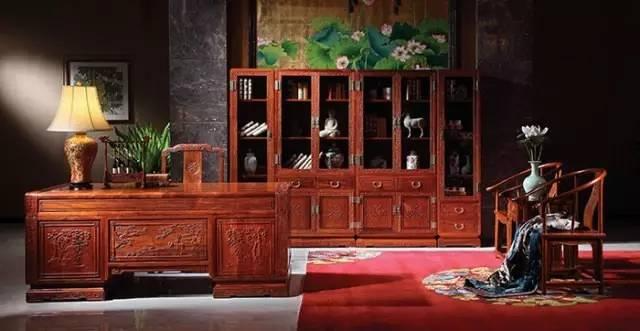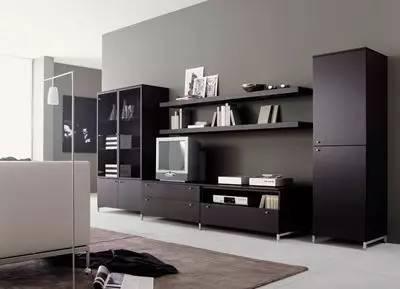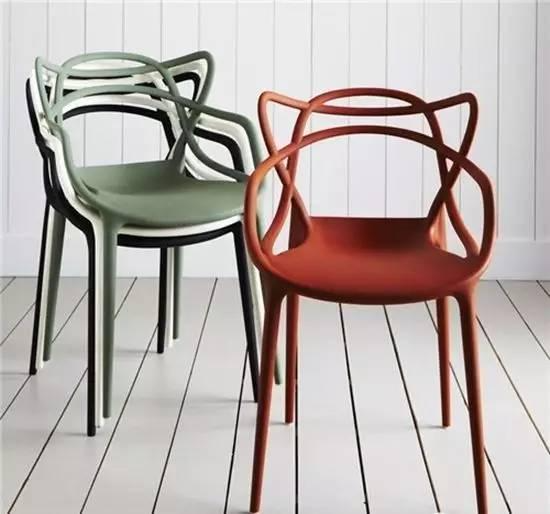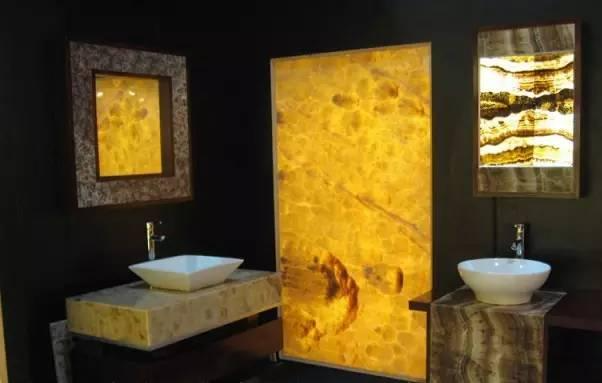How much do you know about furniture?
1. Wooden furniture
Including solid wood furniture, panel furniture, board wood furniture, bamboo and rattan furniture.
①Solid wood furniture: It is divided into white wood furniture and rosewood furniture. White wood furniture includes birch, pine, beech, oak, etc.; rosewood furniture includes rosewood, red sandalwood, rosewood, ebony, wenge, etc. Rosewood furniture is warmer and denser, so it is more solid, heavier, and stronger. The color is darker and more antique. It is the most valuable.
Note: Solid wood furniture includes solid wood and pure solid wood .
Pure solid wood furniture refers to furniture made from the same tree species.
Solid wood furniture uses a certain tree species as the main material, and other cheaper tree species as auxiliary materials for corners or inconspicuous parts to reduce costs.
Currently, there are very few "pure solid wood furniture" in the solid wood furniture market, accounting for only about 5% of the market share. The vast majority are "full solid wood furniture" with a mixture of main and auxiliary materials. The former is at least 20% more expensive than the latter. The identification method is also very simple. Usually, regular manufacturers will indicate the main and auxiliary materials on the label. If there is no auxiliary material, it means that the raw materials of the furniture are taken from the same tree species.

② Panel furniture: refers to furniture made of medium-density fiberboard or particleboard with surface veneer and other processes. A large part of panel furniture is wood grain simulation furniture. Common artificial boards include wormwood, plywood, blockboard, particleboard, medium-density fiberboard, etc. Common finishing materials for panel furniture include veneer (commonly known as veneer), melamine impregnated paper, wood grain paper (commonly known as stickers), PVC plastic board, polyester paint (commonly known as baking paint), etc. The latter three finishes are usually used for medium and low-end furniture, while natural veneer finishes are used for high-end products. Panel furniture has the basic characteristics of being detachable, easy to assemble and disassemble, easy to transport, varied in shape, not easy to deform, more stable quality than solid wood furniture, and affordable. It is mostly used in public buildings.

③ Panel furniture: Panel furniture refers to furniture with a solid wood frame as the structure, various density boards as the surface, and various exquisite solid wood veneers as the contact surface. Panel furniture is often seen in antique furniture, such as American furniture, European furniture and other mainstream style furniture.
Commonly used solid woods in board wood furniture include: southwest birch, oak, ash, catalpa, teak, maple, walnut, cherry, etc. The combination of board and wood just takes into account the gravity that solid wood can withstand and the characteristics of medium-density fiberboard that is not easy to deform, and the cost is relatively cheap.

④ Bamboo and rattan furniture: that is, bamboo, rattan and wicker furniture, which is closer to nature, and gives off a sense of leisure and relaxation.

Second, metal furniture
All furniture made of metal pipes, plates or sticks as the main structure, with wood, various artificial boards, glass, stone and other materials, and iron furniture made entirely of metal materials, are collectively called metal furniture. People often say "steel-wood furniture" should be understood from a professional concept as metal furniture, which is only a type of metal furniture.
The metal materials used in metal furniture are processed through stamping, forging, casting, molding, bending, welding and other processing techniques. Then, the surface is treated and decorated by electroplating, spraying, plastic coating and other main processing techniques. Metal furniture connections are usually assembled and shaped by welding, screws, pins and other connection methods.
The structural forms of metal furniture are varied, usually including disassembly, folding, stacking, and plug-in.
Advantages and characteristics of metal furniture: very individual, rich in color choices, can make home style diversified and more modern. Diverse categories, foldable, aesthetically pleasing, good quality and low price, green and environmentally friendly, fireproof, moisture-proof, anti-magnetic, multi-functional, space-saving, but hard and cold texture, loud noise, single color.
Metal furniture purchasing guide:
1. Wall thickness: The wall thickness of good metal furniture is 1.2-2.5mm, while cheap ones may use 0.5-1.0mm thick iron tubes. A good table frame uses a 4mm thick high-quality triangle to support the table top. A pair of high-quality triangles weighs 16 pounds, while a poor iron frame weighs only 2 pounds. This is the difference, a big price difference, a big quality difference, and a big quality difference.
2. Welding joints: All welding joints of good metal furniture structures are polished smooth and then electrostatically sprayed, but it is impossible to spend the labor to polish cheap products for you.
3. Spraying: Regular products need to go through many processes such as degreasing, pickling and rust removal, phosphating, rinsing, dust removal, powder spraying, drying, cooling, packaging, etc. to produce a set of high-quality table frames. But for cheap products, they are simple: sandblasting, powder spraying, and drying are the solution. Such products will rust from the inside to the outside of the tube wall over time because they are not treated. Some manufacturers are even simpler, just brush black paint and let it dry.

3. Plastic furniture
Plastic furniture is a new type of furniture. There are many types of plastics, but they can basically be divided into two types: thermosetting plastics and thermoplastics. The former are common in radios, car dashboards, etc., while the latter are various home appliance plastic parts, hoses, films or cabernets, etc. In modern furniture, this new material is pressed into chair seats through molds, or pressed into various films as the cover fabric of soft furniture. There are also plastic hoses of various colors wrapped around steel pipes to form a soft chair.
Plastic furniture has more brilliant colors, smoother lines, more diverse and casual shapes, is lighter and smaller, easier to pick up, has more diverse varieties, is more applicable, and is easier to clean and protect.

4. Glass furniture
Glass furniture generally uses high-hardness tempered glass and metal frames. The transparency and clarity of the glass is 4-5 times higher than that of ordinary glass. High-hardness tempered glass is strong and durable, and can withstand the strength of conventional knocks, collisions, blows, and pressures, and can fully withstand the same weight as wooden furniture.
Glass classification:
Ordinary glass: No need to explain this.
Frosted glass: one side is sand-grained, the other side is ordinary glass-like, semi-transparent.
Fog glass: There is a thin layer of mist on the glass, which has the advantages of not being susceptible to fingerprints and being easy to clean.
Emulsified glass: The glass edge is ordinary glass, roughly half a centimeter, and the middle part is similar to atomized glass, white mist color, the advantage is that it isolates rays.
Brushed glass: The color is greenish-white, and its advantage is that it does not absorb fingerprints. It looks very modern when paired with metal furniture.
Laminated glass: There is laminated glass in the middle of the glass, of course this is invisible to the naked eye from the outside, it is opaque and has the advantage of being very strong and cannot be broken even by a hammer. It is generally used for bedside tables. Of course, the cost is also high.
Metallic glass: Made of soft glass with metallic particles, it is very strong and generally has a unique shape.
Glass mirror: Made of high-grade glass plate, with no ripples on the surface, suitable for cabinet back mirrors and standing mirrors, etc.
Three-dimensional glass: It is made on the surface of flat glass using a spraying process combined with related technologies. It is suitable for dining tables, cabinet doors, etc.

5. Stone furniture
The furniture made of stone tools mainly includes: natural marble, artificial marble, and resin artificial marble. Natural marble has natural colors and is environmentally friendly; artificial marble has rich colors and is not wear-resistant; resin artificial marble has many varieties and realistic colors, suitable for decorating items in any place!
Stone furniture is very popular in large-sized homes. The most important thing when choosing stone furniture is to match it with the overall style. For example, sandstone can be used in modern style or simple European style, while darker jade furniture has a stable effect in a Chinese environment.
Stone furniture is also more particular about the choice of accessories. Marble can be matched with solid wood products, and sandstone can be matched with glass accessories to have a good reflective effect. Ceramics and stone are not very compatible, so consumers are advised to avoid choosing them. It should be reminded that because stone furniture is hard and heavy, it is best not to choose it if there are very young children at home, considering the safety of use.
Stone furniture purchasing guide:
■When choosing on the spot, there are three methods: observation with eyes, listening with ears, and dripping ink.
Visual appearance: Stone with uniform fine-grained structure has a delicate texture and is the best quality stone; stone with coarse-grained and unequal-grained structure has a poor appearance.
Listening: Good quality stone will make a clear and pleasant sound when knocked; if there are slight cracks inside the stone or the contact between the particles becomes loose due to weathering, the knocking sound will be rough and dull.
Ink drop: drop a small drop of ink on the back of the stone. If the ink quickly spreads and seeps everywhere, it means that the internal particles of the stone are loose or there are gaps, and the quality of the stone is poor. If the ink drop stays in place, it means that the stone texture is good.
Note: ① Be careful to use red and brown granite and marble. If used, the area of the paving should not exceed 40 square meters. ② Consumers have the right to ask the manufacturer to show the inspection report when purchasing stone materials, and should pay attention to the date of the inspection report. The radioactivity of the same type of stone varies greatly due to its different ore points, ore layers and origins. Therefore, when selecting or using stone materials, you cannot just look at one inspection report. Especially when using it in large quantities in engineering, it should be tested in batches or stages for multiple times.

6. Upholstered furniture
Furniture made of wood, metal, etc. as the frame, springs, bandages, foam, etc. as the load-bearing materials, and covered with leather, cloth, or chemical fiber fabrics. Its characteristic is that it is mainly made of soft materials. Soft furniture is a type of furniture, including sofas and soft beds made of casual fabrics, genuine leather, imitation leather, and leather and fabric.
Soft furniture has an increasing market share due to its comfort, beauty, environmental protection and durability, and has gradually become a consumption trend. With its elegant colors and simple lines, soft furniture is suitable for rooms of various styles, showing its unique charm. It is reported that the replacement rate of soft furniture is generally around 7 years, which is longer than the use time of ordinary furniture.
Buying Guide for Upholstered Furniture:
1. Pay attention to the materials used for the frame, cushions and fabrics . For example, if it is a leather sofa, it must be clearly stated in the contract whether it is a full leather, half leather or thick leather sofa. The frame part is currently more commonly made of hard miscellaneous wood (catalpa, oak, ash, birch, etc.), and the mortise and tenon connection structure is better than the screw connection structure; the sponge used in the cushion must pay attention to the use standard, the higher the density, the better, and the sponge should have good resilience; the fabric strength should be good, and the high-strength fabric surface should not be pulled, and the leather surface will not be loose.
2. When buying a mattress, pay attention to the strength of the springs, the filling materials and the fabrics . The strength of the springs depends on the steel grade used for the steel wire. The higher the steel grade, the better. Currently, the better material is manganese steel. The filling materials include cotton felt (or chemical fiber felt) and palm flakes. Cotton felt has good air permeability and chemical fiber felt has good strength. Fabrics that are treated with anti-mite treatment are better.
3. Pay attention to the firmness of the furniture structure. For example, when buying a sofa, you can use your hands to move the diagonal part inward. If it shakes or makes a creaking sound, it means that the structure is not firm.
4. Check whether the internal structural materials of the sofa or bed (mattress) are moldy or insect-eaten; observe whether the furniture cushioning meets the requirements of the number of layers, hygiene indicators, etc. specified by the industry standards.
5. The order contract must specify the material (full leather, half leather), sample color number, etc. , and pay attention to whether the fabric of the sofa cover and bed cover can be washed or dry cleaned, so that there is evidence in case of disputes. Pay attention to whether there are any leaks or nails at the joints of the fabric, as some fabric sofa covers are prone to shrinkage and deformation after washing.

Furniture is classified by function:
① Sitting and lying furniture: can be divided into chairs, stools, sofas, beds, etc.;
②Table furniture: can be divided into two categories: tables and chairs.
③ Cabinet furniture: can be divided into three types: closed, open and comprehensive; can also be divided into two types: fixed and mobile.
Furniture is classified by architectural environment:
①Residential furniture: that is, civil furniture, which can be divided into living room furniture, bedroom furniture, dining room furniture, study furniture, children's room furniture, etc. according to the space area;
② Public furniture: office furniture, school furniture, hotel furniture, commercial display furniture, etc.;
③ Outdoor furniture: lounge chairs, armchairs, benches, tables, racks, etc.;
